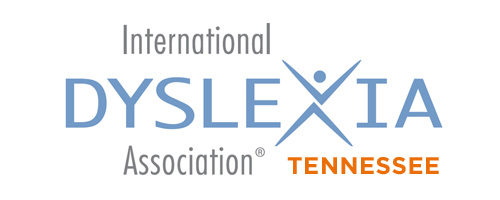
What does that mean exactly?
 Dyslexia is a specific learning disability…
Dyslexia is a specific learning disability…
Dyslexia is considered a learning disability because it can impact a student’s ability to be successful in reading development and academics unless provided with structured literacy instruction. Dyslexia occurs on a continuum with students experiencing mild, moderate, or severe impact on their reading development and learning. Students who continue to struggle even after receiving appropriate instruction and intervention may qualify for special education services and accommodations.
Dyslexia is neurobiological in origin.
Dyslexia is a brain-based learning difference which impacts language skills such as reading, spelling, and writing. It is not a problem with vision or hearing acuity. There is a genetic component to dyslexia. It is likely that a child with dyslexia has a sibling, parent, or other close relation who does as well.
Dyslexia is characterized by difficulties with accurate and/or fluent word recognition and by poor spelling and decoding abilities.
These primary characteristics of dyslexia become evident as children progress from developing the earliest reading skills (phonemic awareness, letter naming, learning sound-symbol relationships) to developing word level skills. These word level skills are typically taught and monitored starting at the end of kindergarten and in first grade.
Difficulties typically result from a deficit in the phonological component of language…
Our understanding about the root cause of dyslexia continues to evolve. A prominent theory supported by research is that of a phonological processing weakness. That could be a weakness with understanding that written words are comprised of speech sounds (phonological awareness), and/or a weakness with holding language information in short-term memory (phonological processing), and/or a weakness retaining and recalling language information from long term memory (measured by Rapid Automatic Naming tasks). When kindergarten students are screened for phonological processing skills development and information is known about their family history, they can be identified at risk for dyslexia. Students who are identified at risk for dyslexia in the earliest stages of reading can then receive early intervention to make sure those weaknesses don’t compound as decoding, reading, and spelling instruction continues.
Dyslexia is a learning disability that is often unexpected in relation to other cognitive abilities and the provision of effective classroom instruction.
Dyslexia is not related to intelligence or caused by low motivation. When given appropriate, evidence-based reading instruction, students with dyslexia struggle to make the same progress as their peers do.
Secondary consequences may include problems in reading comprehension and reduced reading experience that can impede growth of vocabulary and background knowledge.
Dyslexia is a word-level reading problem. Weaknesses with accurate and/or automatic decoding and word reading can contribute to secondary problems with reading comprehension. Students who struggle at the word level read less than their peers. They encounter fewer vocabulary words and get less exposure to background knowledge obtained from independent reading.
What does Dyslexia look like?
Characteristics of dyslexia change over time
 |
Preschool Years
Pre-readers can be identified at risk for dyslexia. Some early indicators are difficulty noticing and producing rhymes, difficulty matching spoken words with the same beginning sounds, difficulty holding bits of information in short term memory, and difficulty remembering learned information, such as letter names. |
 |
Elementary School Years
Pre-readers can be identified at risk for dyslexia. Some early indicators are difficulty noticing and producing rhymes, difficulty matching spoken words with the same beginning sounds, difficulty holding bits of information in short term memory, and difficulty remembering learned information, such as letter names. |
 |
Middle School Years
As elementary grades progress through middle school, students with dyslexia typically read at a slower rate than their peers and have trouble reading multi-syllable words and words with affixes. Spelling and writing weaknesses likely persist, as well as difficulty with independent reading comprehension. |
 |
High School Years
High school students with dyslexia may continue to have word-level reading inaccuracies and typically continue to read at a slow rate. Spelling, writing, and reading comprehension difficulties may persist. |
People with dyslexia may also experience difficulties with understanding spoken language and expressing themselves clearly when talking. Each individual with dyslexia will experience dyslexia differently depending on the severity of its impact and how well the educational environment supports their needs.
Do I have Dyslexia?
Dyslexia is commonly referred to as a “hidden disability.” It is not a disease and it cannot be diagnosed in the same way that a medical condition is determined. There is no blood test or scan test that determines dyslexia and a diagnosis is the determination of a qualified professional.
What can help a student with Dyslexia?
Often dyslexia is not diagnosed and not addressed, which may amplify emotions of anxiety, frustration, poor self image and depression. Appropriate reading instruction can help dyslexic students improve their reading and spelling. This reading instruction goes by many names, including Structured Literacy and Orton-Gillingham. School accommodations can help dyslexic students access the school curriculum and demonstrate their knowledge. The inconsistencies of dyslexia can produce serious challenges in a child’s life. There is a tremendous variability in the student’s individual abilities.
Above all, focus on their strengths, find community support and celebrate the talents and strengths of all students with dyslexia. Connect with other families throughout Oregon, online or in person.
Key Facts About Dyslexia
-
- Dyslexia is very common; up to 20% of people have symptoms of dyslexia.
- An unexpected struggle learning to read and write is the hallmark of dyslexia.
- Dyslexia is not caused by laziness, inattention, low intelligence, or social/emotional problems. However, the frustration of failing to learn basic skills can cause emotional problems.
- ADHD (Attention deficit hyperactive disorder) may be present, but it does not cause dyslexia.
- Specialized remedial teaching in basic skills can be effective at all ages. Many dyslexics also benefit from explicit teaching for advanced writing composition such as writing term papers, or advanced academic reading.
- Many dyslexic students are talented or gifted in a variety of academic areas, arts, music or sports. Dyslexic students can achieve in school and work.
- Some people with dyslexia may be eligible for accommodations in school, exams, college, professional schools and work.
Common Myths
There are great misconceptions and myths about dyslexia which make it that much more difficult for someone with dyslexia to receive help and generally be understood. It is a myth that individuals with dyslexia read or see “backwards”; in fact, dyslexia is not a vision problem. The difficulty with reading and spelling is not because they are not trying hard enough; in fact, many students with dyslexia are working harder than other students. Dyslexia is not a disease, and therefore there is no cure. Individuals with dyslexia do not have a lower level of intelligence. In fact, more often than not, the complete opposite is true.
Share this page with your friends…

